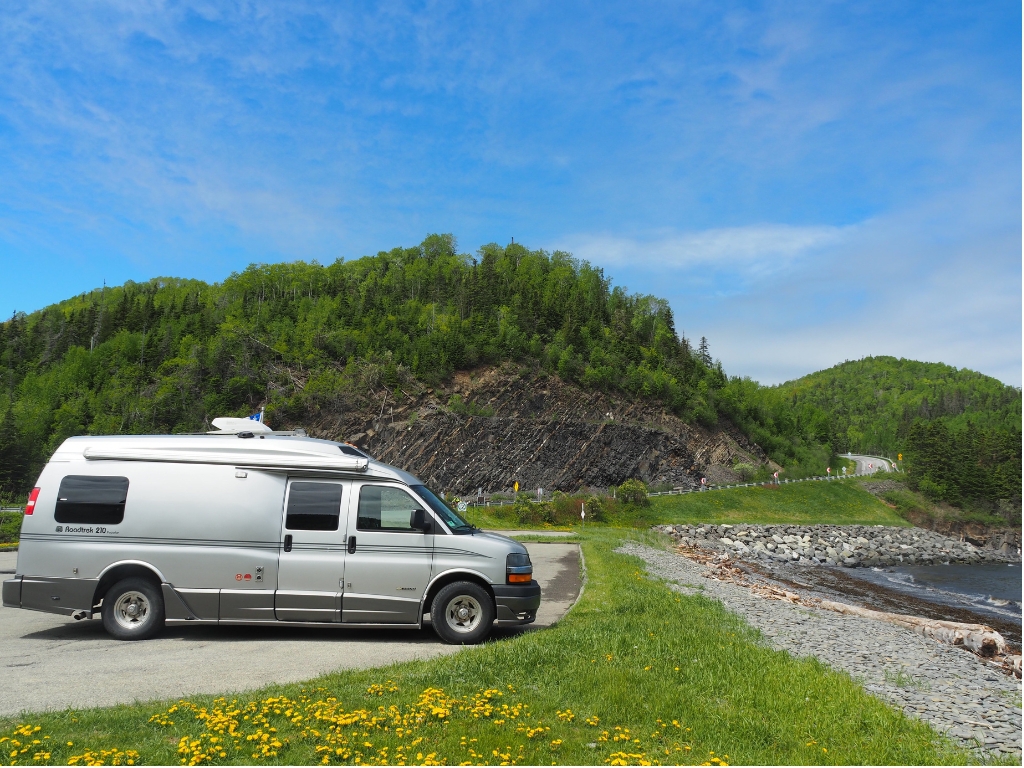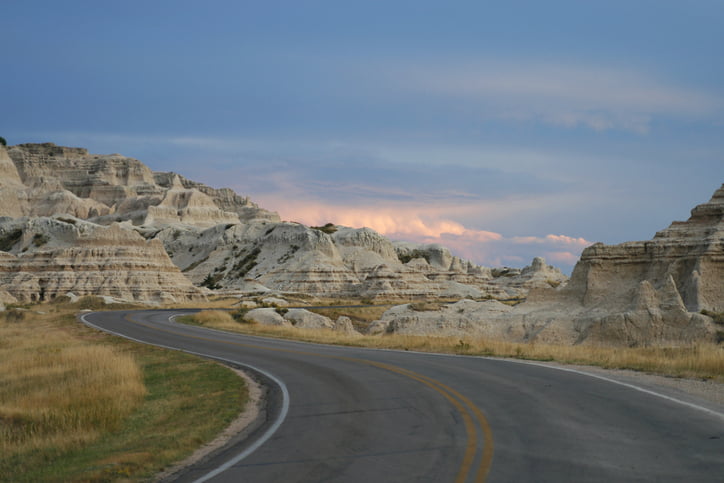There’s something incredibly satisfying about being able to pilot your “home on wheels” around a circle route. It makes for a nice, tidy itinerary. We find it’s also a way to absorb a destination, rather than feeling like we’ve just passed through.
As far as circular routes go, nothing beats the picturesque Gaspé peninsula at the far eastern reaches of Quebec. It has just about everything we travel for in our RV: stunning oceanfront landscapes, green mountains, wildlife, small museums, charming villages, and many parks and campgrounds. And don’t even get me started on the fresh seafood!
The regions of Gaspé are quite distinct: the coast is lined with farms and traditional fishing villages, giving way to the dramatic hills of The Haute-Gaspésie which spills into the breathtaking Land’s End, best known for the dramatic Percé Rock.
Celebrating Gaspé’s parks
With more than 1,000 kilometres of coastline extending along both banks of the St. Lawrence River, Gaspé is peppered with Parcs Québec sites, as well as an excellent Parks Canada location. The unique maritime parks are more than enough to fill a week or two of driving around the peninsula.
Each of these parks has a distinct personality, as well it’s its own unique geology, wildlife, flora, and fauna. And each park is representative of an exceptional feature of Québec heritage. Here are a few stops that you won’t want to miss on your RV tour around the Gaspé peninsula.
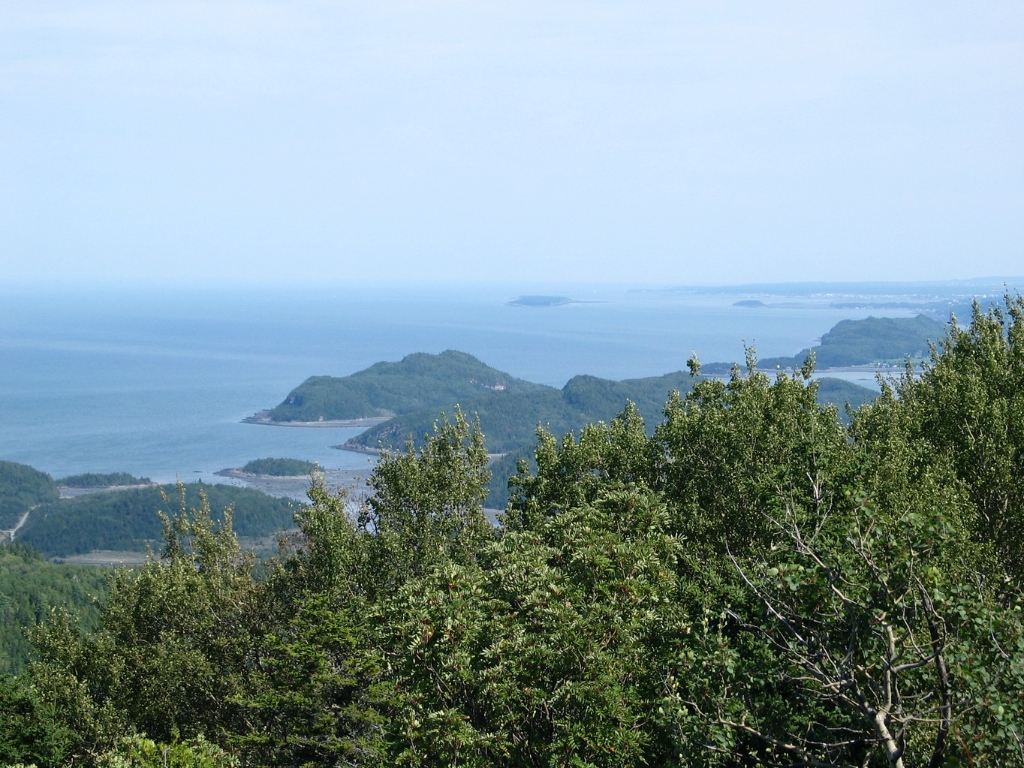
Parc national du Bic characterizes the south shore of the St. Lawrence as well as the influence of the saltwater environment. The action of the sea is everywhere. The park marks a boundary between the aspen-dominated Boreal forests and the Western forests of oak and maple trees, creating a richness of vegetation and habitat that is home to moose and deer.
It’s the coastal setting that’s at the heart of this park – it’s an area of level shoreline with hiking and cycling trails that make it very accessible to the two-legged visitor. It’s also a favourite stop for migrating birds like the Common Eider, hawks, eagles, and owls. Parc National du Bic is prime bird watching real estate for those who tuck binoculars into their knapsack.
When the tide is out, you can walk along the bottom of the sea to get a closer look at the Harbour and Grey Seals; both varieties are protected in the park and offshore islands.
The park has serviced sites suitable for RVs in three separate campgrounds.
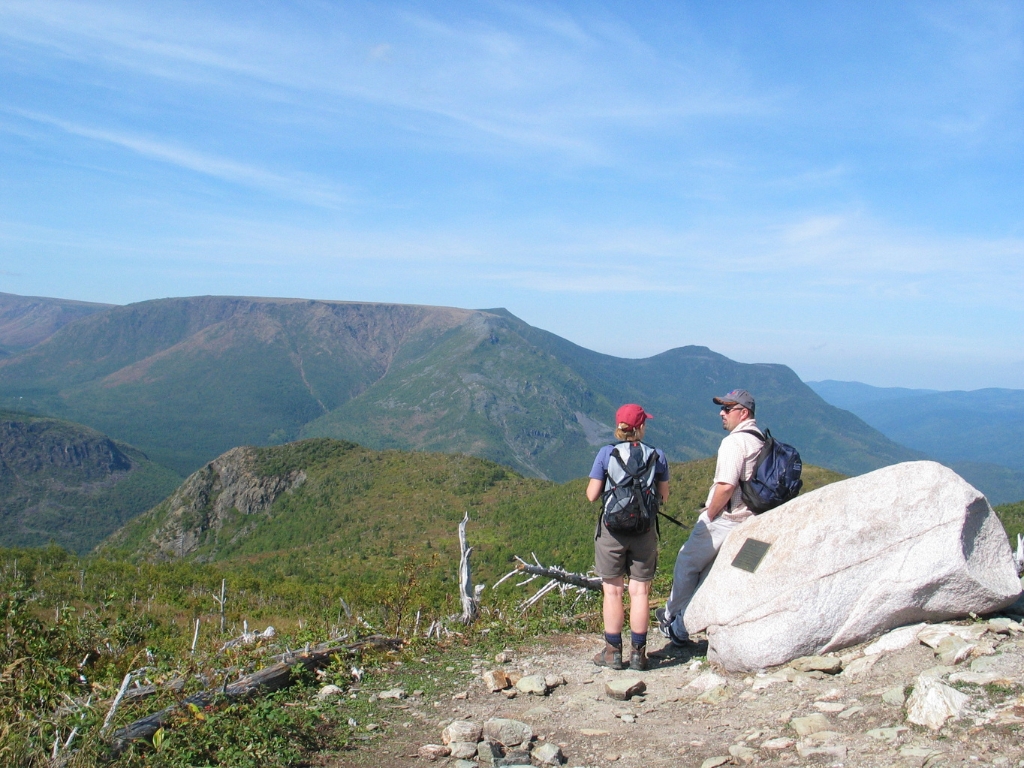
In the heart of the peninsula, Parc national de la Gaspésie is a “sea of mountains” – a swell in the final leg of the Appalachian Mountains with more than two dozen summits of more than 1000 metres in elevation.
This is a park for hikers. There are more than 140 km in trails, but if you are time-stressed take the short Sentier du Mont-Ernest-Laforce trail – in an hour you’ll reach spectacular views from the rock crest of the hike, also an excellent area for spotting moose.
Besides the breathtaking views from the volcanic Chic Choc Mountain Range that snakes through the park, keep a lookout for the native herd of caribou (they’re only found at 900 m and above). It’s a wildlife spotters dream: Parc national de la Gaspésie is the only park in North America where you can expect to see deer (along the riverside), moose (in the forest) and caribou (at the higher elevations).
The park has four serviced campgrounds with comfort stations and a dump station. In addition, there is the La Vallée RV area with sites designed for trailers and motorhomes that are self-reliant (the loop has no toilet and shower facilities).

Forillion National Park marks the halfway point in the Gaspé circle tour. This Parks Canada nature park protects ancient fossils, wildlife, seabirds, the heritage of First Nations inhabitants, and proud fishing traditions. The parkland covers a deep indentation in the shore, creating a beautiful natural harbour, created where the north shore juts into the Gulf of St. Lawrence and the southern shoreline faces the moderate waters of Gaspé Bay. There are three beautiful campgrounds with 282 well-wooded, RV sites (only 77 with services), although some aren’t suitable for larger pull-through rigs.
At Forillon, we sea kayaked, hiked trails through towering coniferous forest, learned about the golden era of the cod fishery at the restored Hyman & Sons General Store, and soaked in dramatic wilderness at Cap-Bon-Ami, where 375-million-year-old cliffs mark the terminus of the Appalachian Mountain chain as it dips into the Gulf of St. Lawrence. The nooks in the cliffsides shelter several types of sub-Arctic flora. We opted to take our lunchtime snack inside the RV, as the picnic area had been temporarily taken over by a mama black bear and her cubs.

You may recognize Parc national de l’Île-Bonaventure-et-du-Rocher-Percé from stamps and postcards. It’s dominated by the majestic, eye-in-the-needle Percé Rock, a massive piece of limestone cracked from the coast and sculpted over time by the sea and the wind.
Three-hundred million years ago, the islands of Percé and Bonaventure were a part of the mainland. Water, ice, and the wicked force of the seawind weathered the portion of the Appalachians that extended into the Gulf, eventually breaking the island and fossil-riddled rock away from the mass.
Codfish and humans underscore the history of this part of the Gaspé Peninsula. Fisher folk from Ireland, Québec, and the Channel Islands settled here in the 18th century, quickly becoming self-sufficient through the seafood they pulled from the cold water, the crops they grew, and the sheep they raised.
The Parcs Québec site was chosen to create a refuge for the quarter-of-a-million seabirds that nest, to tell the story of the cod trade, and to protect the abundance of flora and fauna that exist in the cold maritime climate.
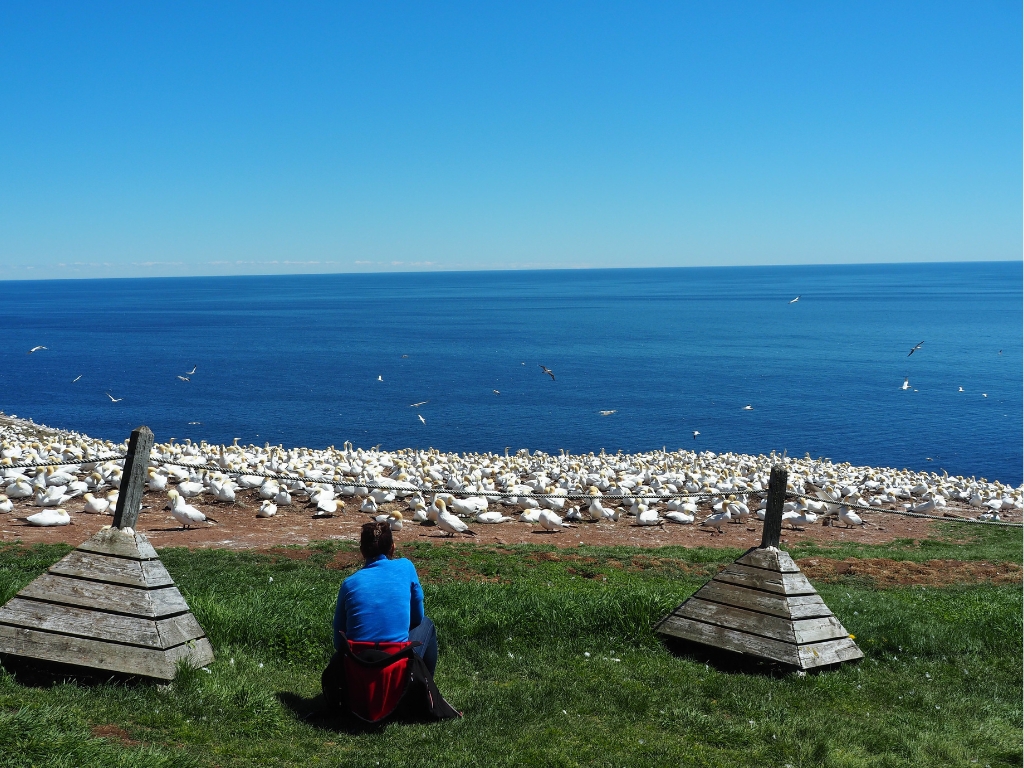
You can take a boat trip to compact, rocky Bonaventure Island and hike through the Boreal forest, where there is so little soil that roots of the stunted conifers only skirt below the surface. Meadows blanket the bedrock; what once supported the islanders’ crops is now a tangle of mosses, lichens and grasses. Since 1971 Bonaventure has been home only to grey seals and seabirds, including the Northern Gannet whose dense colony of over 50,000 mating pairs blankets the north point of the island. You’ll hear them long before you see them!
There are no campgrounds on Bonaventure but several close to the village of Percé.
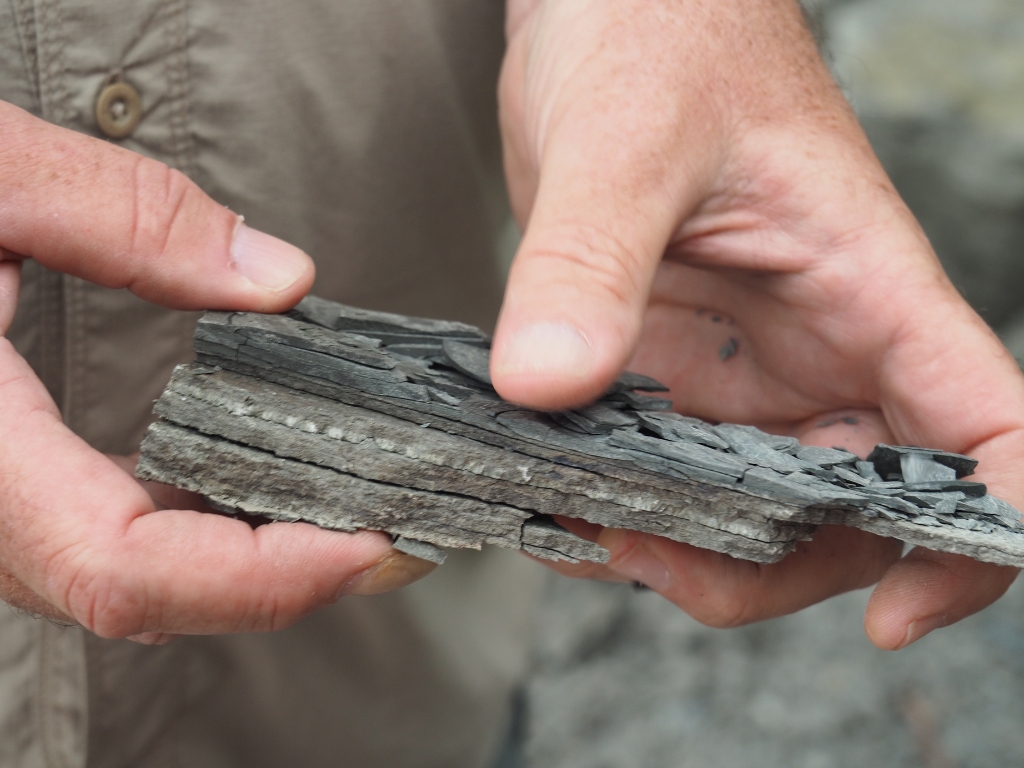
Keep this rule of thumb in mind at Parc national de Miguasha on the southern Gaspé coast: pebbles, rocks, and fossils are protected at Miguasha, a UNESCO World Heritage Site considered the world’s best paleontological site representing the “Age of Fishes.”
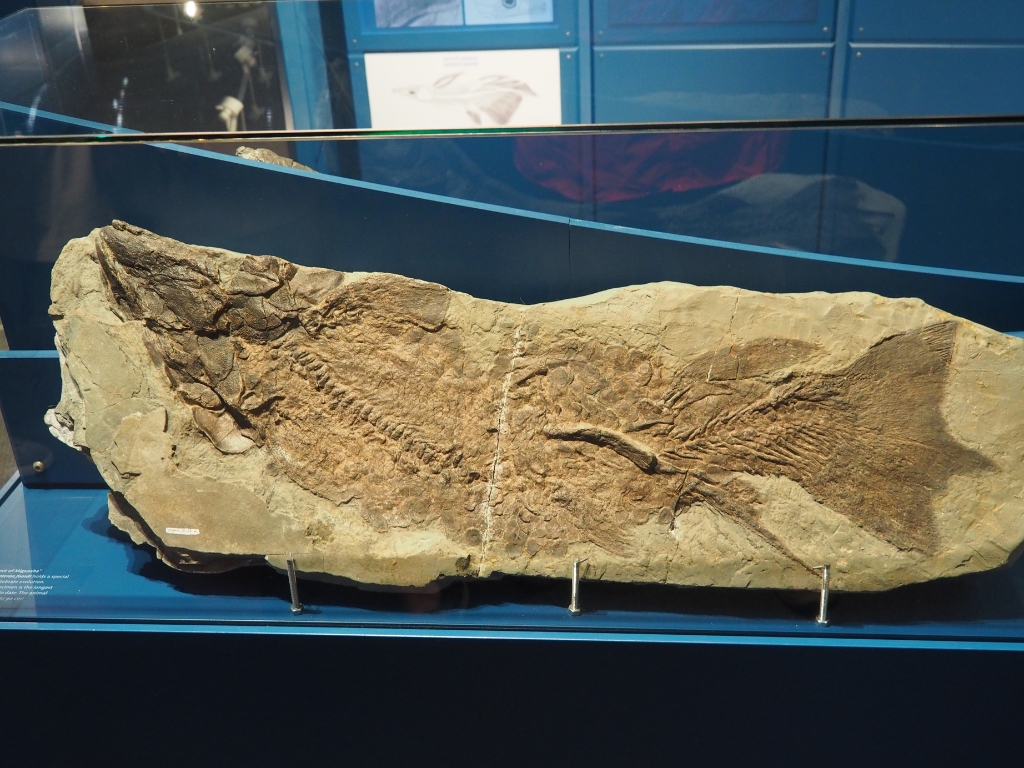
The Age of Fishes, a.k.a. the Devonian period, happened 370-million years ago; before dinosaurs, before reptiles, even before mosquitoes. It captures the transition from water to land, from lobe-finned fish to tetrapod (the first terrestrial vertebrates with four limbs). It was a crucial evolutionary time, when an animal with a vertebral column was preparing to crawl out of the water and onto dry land. Miguasha is unique because of the quantity and the quality of the fossils.
One particular fossil takes star billing in the park’s interpretive centre – a specimen nicknamed worldwide as The Prince of Miguasha. It’s considered one of the world’s most important fossils because it’s so exceptionally evolved in such a primitive time period, developing airways, a strong spine, and bones similar to those in a human. The paleontologists’ research shows we all have a link to the water and to the fishes that once swam in the oceans.
The heritage park does not have a campground, but we found well-equipped sites a half-hour away at Carleton-sur-Mer campground with Wi-Fi, clean comfort stations and some pull-through sites.
Gaspé is somewhere we yearn to return. A look at the map has some RVers thinking it’s “a long way to nowhere.” In truth, it’s a beautiful drive to somewhere very special.
The suggested route: follow Route 132 (also signposted as Route de la Mer), hugging the coastline, perhaps straying inland for hikes in the forested Chic-Choc Mountains.
RV travel tips: There are long, steep hills near Percé and through Forillon National Park, but also frequent passing lanes and pull-off spots. Towns and services are spaced apart, so keep gas, propane, and fridge full.
Find fresh seafood right from the local fishmonger in many small communities, or sit down to enjoy a gourmet meal waterside in Percé at La Maison du Pêcheur, where the menu celebrates fresh sea scallops, shrimp, clams, salmon, and lobster.

